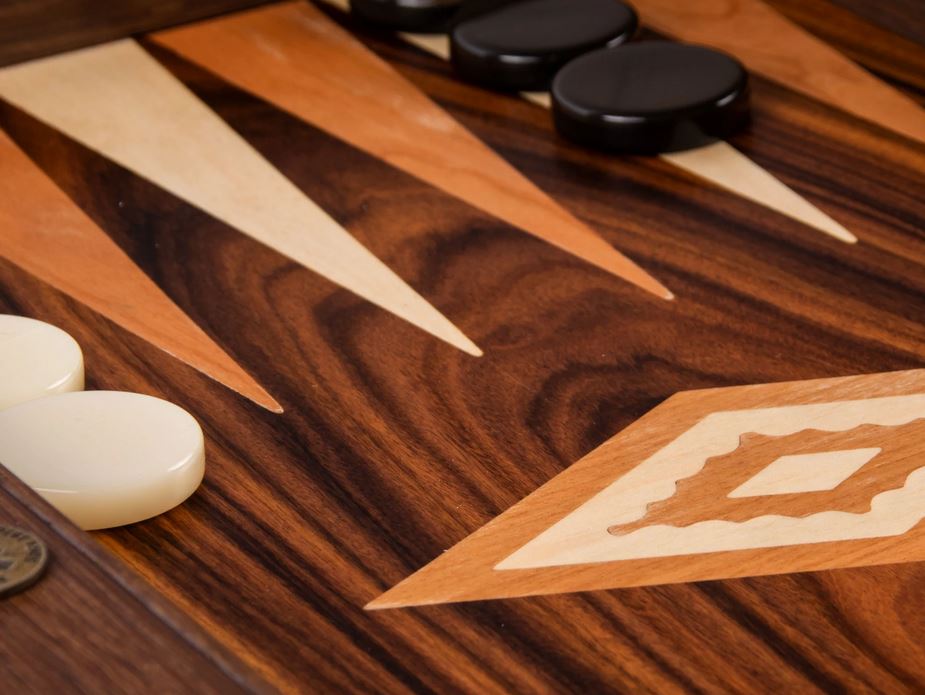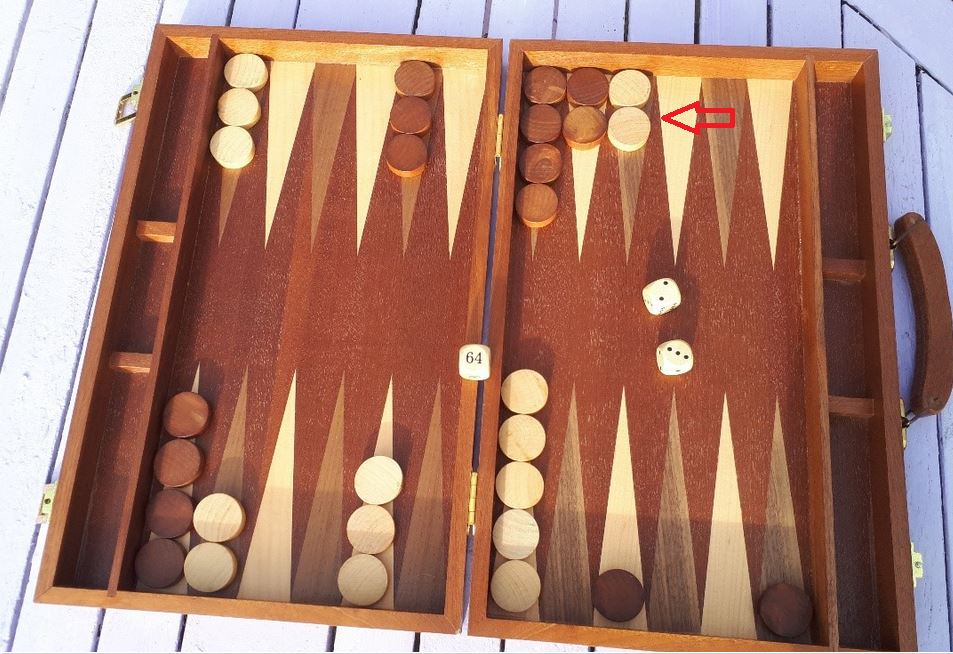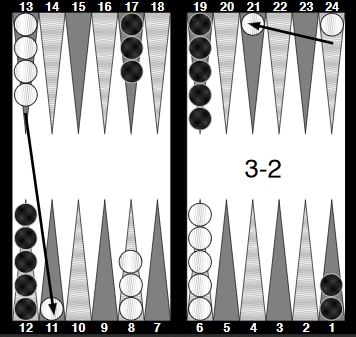Last updated on April 28, 2024
In this Deluxe Backgammon post for beginners, we will take look at the tactical priorities during the opening stages of the game. Both players will be trying to establish an advantage and their focus will be on balancing the tactics of hitting, securing key points, splitting and creating builders.
Hitting.
Unless your opponent rolled one of the point-making rolls or ran to their mid-point with a 6-5, they will have left one or more blots around the board. Typically, the correct tactic is to be hitting as many as you can. Doing so will rob them of the first-move advantage gained by winning the opening roll. Hitting will erase whatever racing lead they had established and make it harder for them to develop their game as hoped. Multiple hits early in the game present the option of adopting the blitz strategy. The blitz is one of the fastest ways to win backgammon and involves an all-out assault, hitting at every opportunity.
Sending your opponent backwards in the race is an advantage. The further you can send them back, the greater the advantage. Therefore, hitting checkers in your opponent’s home board should always take priority as the of pips is greater than elsewhere on the board. Hitting on your opponent’s side of the board has the added benefit of getting one of the back checkers moving forward. There may be exceptions, for instance, if you could hit your opponent on your 5-point and secure the point on the same roll, this should take priority. This is because you achieve two goals, a hit and securing a key point in your home board. Hitting blots that are on the higher points in your home board is also often correct. However, it carries the greatest risk, since you could be hit in retaliation and then lose 20+ pips in the race.
Hitting a checker in your own outer board has its advantages too. It sends your opponent back and brings additional material into the attack zone. This creates pressure on your opponent if they haven’t secured an anchor.
Securing points.
In the early game, it should be a priority to secure points in your home board, including the bar-point. Ideally, these will be the key points from the bar-point through to the 3-point. The 1 and 2-points are not so valuable as you are placing material deep in your home board, whereby they have limited flexibility. Why is the 5-point so much more valuable than the 1 or 2-point? They both make it equally hard for your opponent to enter from the bar. However, the 5-point is far more effective in containing a checker in your home board once because it creates the start of a prime with the 6-point.
Priming is a very effective strategy in backgammon, which creates a blockade that limits your opponent’s movement. A 6-prime is ideal as it creates an obstacle that cannot be passed as the highest roll on a dice is 6. Primes in your outer board are also valuable, but the ultimate is the 6-prime in your home board, which closes out the board. If your opponent is on the bar and faces a closed-out board they forfeit their turn until an open point becomes available.
The secure points, particularly those on the outer board, also offer an attacking option. They are within striking range of the home board and can be used to attack any blots. Stacked, points are best for the attacking option. A stacked point has more than two checkers on it, so you can attack and still leave the point secure. A stripped point is a secure point that no longer contains more than two checkers. It remains secure, but cannot attack without losing the secure point.
Splitting.
Beginners quickly understand why it is important to secure home board points or bring down builders from the mid-point. However, they struggle to see the value in splitting their back checkers. Splitting creates several distinct advantages.
First, it makes it easier to establish an advanced anchor on a subsequent roll. An advanced anchor is a secure point on the opponent’s five-point, four-point, or sometimes the bar-point. Advanced anchors are good because they give the player a better opportunity to escape their own checkers. It also provides a secure landing point for any checkers that are hit and sent to the bar. Securing an advanced anchor should be a primary goal in the early game.
Secondly, splitting threatens your opponent’s outer board, bringing more points within range of a direct hit (6 or less) from the advanced anchor. This multiplies the chances of hitting any blots your opponent might bring down from their midpoint as builders.
Thirdly, splitting involves leaving two blots in your opponent’s home board, which may appear to be high risk. However, if your opponent does decide to hit one or both of the blots, they risk a return strike. In this instance, the loss of ground is far greater for them than it is for your own back checkers. They risk losing 24 pips in the race compared to perhaps 5 for your back checkers. That said, your opponent will be determined to stop you from securing an advanced anchor, particularly one on their 5-point. The 3-2 opening roll below, shows an example of splitting and also unstacking the mid-point by bringing down a builder.
Builders.
The more points that your checkers have spread across, the greater number of options you have for playing your next roll. This gives you more flexibility and therefore you are more likely you are to roll something useful. It only takes two checkers to secure a point, so any additional checkers can be considered “spares”. Having one, or perhaps two, spares can sometimes be useful, but any excess should be considered a waste of material. The spare checkers should be viewed as builders available for securing new points or attacking blots. A builder is a checker brought into the outer board within range of one or more key points that you want to secure.
If we view any more than three checkers on a single point as a waste of material, at the start of the game we have four wasted checkers. These spare checkers are located on the mid-point and the 6-point of your board. It should be a priority to get these wasted checkers into play as soon as possible builders. Obviously, doubles provide the opportunity to advance these spare checkers onto secure points. However, sometimes it is worth considering slotting to create a builder.
Slotting is where a single checker is moved to a point that you wish to secure on a subsequent roll. It does involve some risk as the blot could be hit. An example of this is shown in the 4-1 opening roll below. In this instance, a checker is unstacked from the mid-point and a checker is slotted onto the 5-point. It is a high-risk move, but worth it if you manage to secure the valuable 5-point on the next roll. If you are hit, there is plenty of time to recover. Slotting is a useful tactic to help build primes.
Related content
General principles for the opening replies.
A useful article from Backgammon Galore discussing the opening replies.





Good backgammon tips!